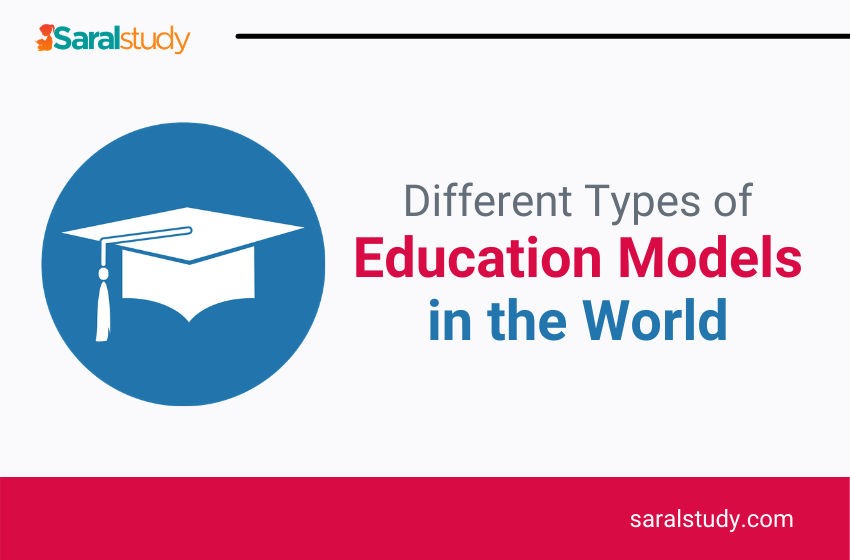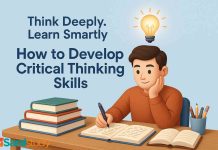Over many decades the processes of learning and teaching have changed significantly to adapt to human needs and fulfill the requirements of evolving societies. Two common elements associated with any learning and teaching methods are students and teachers. The two of them are reflections of one another success in their professions. As a teacher, successful students indicate a good teaching process, while successful teachers indicate well-established learning styles. It covers mastery, outcome-based, competency-based, and school-based learning educations. It shows the pros and cons of each education model and highlights major points related to that type of education.
There are numerous research findings on the education systems around the world that force us to think about how we impart education to our students. The few countries that dominate conversations of good education systems are Finland, the USA, Australia, Singapore, Japan, China, France, South Korea, and Canada.
Types of Education Models
Check below the types of education models in world.
1. Finland
The Education system in Finland which is considered as the world number one is different from that in many other countries. Compulsory education begins at 7 years old, with a maximum of one year of pre-school education. There is a national core curriculum, but time-table and delivery are left up to schools and teachers. There is no selection in terms of formal testing or national examinations at any stage before higher education until matriculation (end of secondary education) which is required for entry to post 19 education.
2. USA
The Education System in the USA is also based on free and compulsory primary and secondary education, but, the ages by which children are enforced to start and allowed to finish education varies from state to state. Typically, education is mandatory from first grade (usually age 6) to tenth grade (age 16). At the end of secondary school, most scholars sit for SAT examinations to continue tertiary education.
3. Australia
The Education system in Australia is based on mandatory primary and secondary education from age 6-19. Before primary education, there is pre-primary education which is non-compulsory. After secondary education in Australia, there is tertiary education at universities or technical schools.
4. Singapore
The Education system in Singapore which is acknowledged among the best in the world consists of preschool (3-6), mandatory primary education (6-12), secondary education (12-17), and tertiary education. The noting point is that at the end of primary schooling, children have to take the Primary School Leaving Examination which is highly competitive and decides the secondary school allocated to a child.
5. Japan
Japan, forms communities of learners who look to help each other instead of working alone as individuals. Learning from and teaching other disciples not only helps the learner but also the teacher. Teaching other students encourages students to clarify what they do and don’t know, as well as logically structuring their thoughts. This action of retrieval also supports embed knowledge in long-term memory.
A collectivist culture of Japan also forms families who are supportive of the school system and educational achievement. Receiving emotional support from family is highly beneficial and can promote academic success whilst also helping improve student well-being.
6. China
China is notable for developing exceptional maths abilities in its scholars such that, by age 15, scholars are up to three years ahead of their English peers. Some have recommended that this may be, in part, due to their mindset towards maths. Emphasis is placed on an expectation that scholars can all do maths, with lots of practice and support on how to get better. Strategies to help develop a growth mindset are commonplace in English schools, though there is a worry that this is sometimes not done most effectively.
7. France
France has recently passed a law which is enforced in September is that banning students from using their mobile phones at school. Recent research conducted in England found that this may be a very good policy, as scholars who attended schools that had enforced a ban saw an average boost of 6.4% to their grades, with this effect being even more asserted for struggling students at 14%. Hence, schools in England should consider the following suit, or at least look at teaching students better strategies to manage their phones.
8. South Korea
In South Korea, the main focus of their education system is primary education. They make a good start with students, which leads them through the rest of their educational life. The scholars are known to go to school seven days a week. South Korea consumes 8% of its GDP on education as compared to a 6% average of other OECD participating countries. Culturally there is a high importance placed on education. Parents are very concerned and are willing to spend a lot of money to get their children the education they need. Teachers have to be highly qualified and are also getting good salaries. It is one of the yearned for career choices in South Korea.
9. Canada
From the last few years, Canada has been a surprise entry in the top 10 education systems. Their system is very simple. They concentrate on three main parts that are literacy, math, and high school graduation. With a clear perception, they have created a transparent system in collaboration with administrators, teachers, and the union to create a curriculum and methodology that is successful. The system promotes teamwork, quality education, continued teacher training, transparent results, and a culture of sharing best practices. The teacher confidence is also high because their pay is acceptable, working conditions are favorable, facilities are good and there are all kinds of opportunities for teachers to improve their practice. Most importantly, maybe, there is discretion for teachers to make their own judgments.
10. India
In India, the education system is based on 10 years of primary education, from the age of 6-14, consisting of 5 years of lower primary education and 3 years of upper primary, which is followed by 2 years of high school. This is followed by 2 years of higher secondary education and lastly 3 years of college education for a bachelor’s degree.
Wrapping up
We can learn a lot from other country’s education systems. No country has all the answers, and what works somewhere will not significantly work elsewhere. Places that are definitely worth considering include banning mobile phones, developing a growth mindset, starting school later, not streaming by ability, and adopting a more collective culture.
This work has shown the possible association between major educational models currently in use and the so-called teacher effectiveness. Several models of education have been explained in thorough detail along with corresponding literature to highlight the link between the two variables mentioned earlier. The study pinpoints the road map to further studies to explore this relationship.
Frequently Asked Question
Q1. What is the education model?
Ans. An educational model consists of a compilation or synthesis of different pedagogical theories and approaches, which guide teachers in the preparation of study programs and the systematization of the teaching and learning process.
Q2. What are educational systems?
Ans. An education system is an arrangement that consists of at least one teacher and one student in a context. Education systems encompass all institutions that are concerned with educating scholars who are in K-12 and higher education.
Q3. What are the types of the education system?
Ans. The school system in India has four levels: lower primary (age 6 to 10), upper primary (11 and 12), high (13 to 15), and higher secondary (17 and 18). The lower primary school is distributed into five standards, upper primary school into two, high school into three, and higher secondary into two.
Q4. Why are models so important?
Ans. Models are useful tools in learning science that can be used to improve explanations, generate discussion, make predictions, provide visual representations of abstract concepts and generate mental models
Q5. Why Finland’s education system is best?
Ans. Finland has been paid outsized attention in the education world as its scholars scored the highest among dozens of countries around the globe. Teachers in Finland spend some hours at school each day and spend less time in classrooms. Teachers utilize the extra time to build curriculums and assess their students.





